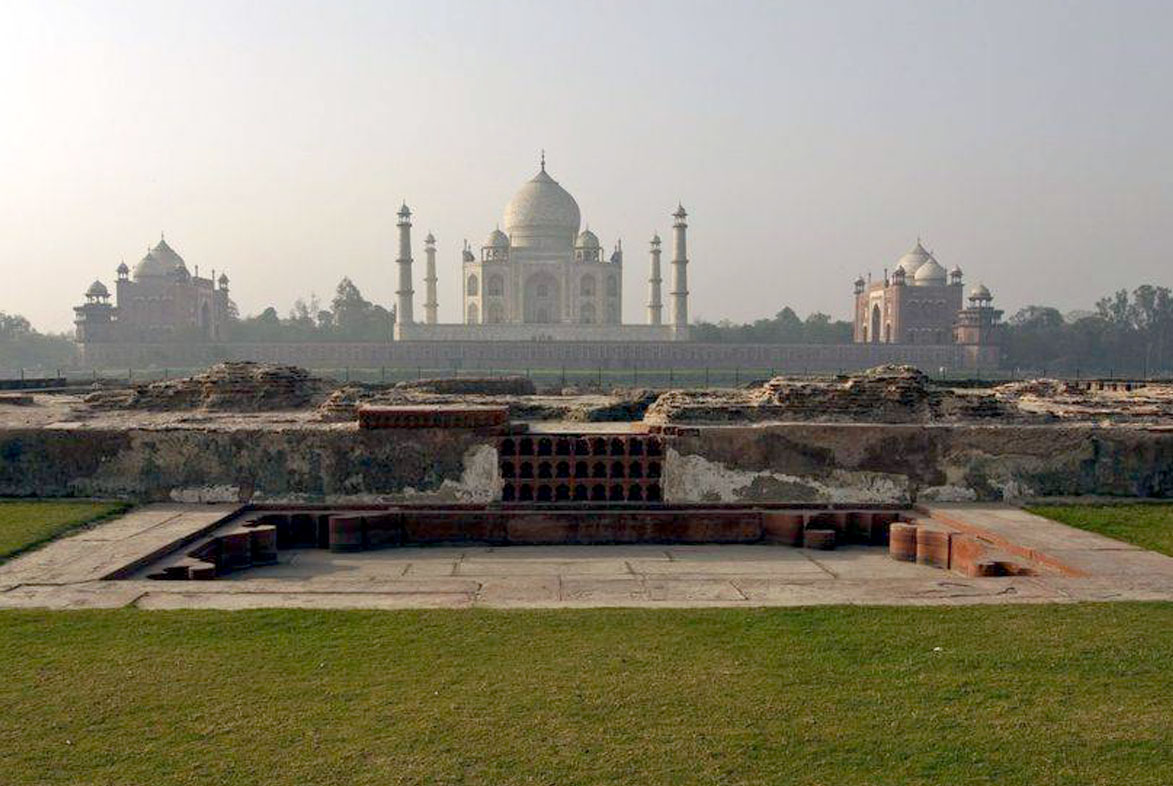The Taj Mahal, built by the Mughal Emperor Shah Jahan in memory of his beloved wife Mumtaz Mahal, stands as one of the most iconic monuments in the world. This white marble masterpiece symbolizes eternal love. However, amidst the glory of this magnificent structure, an intriguing legend persists – did Shah Jahan plan to construct a Black Taj Mahal?
This fascinating tale has intrigued historians and sparked debates for generations. The legend suggests that Shah Jahan envisioned a mirror image of the white Taj Mahal, constructed entirely out of black marble, on the opposite bank of the Yamuna River. This supposed “Black Taj Mahal” was intended to be his own final resting place, creating a stunning symmetry with the existing Taj Mahal. But is there any truth to this story, or is it merely a myth passed down through time? Agra tour packages often include visits to the Yamuna’s opposite bank, where traces of this legend linger.
Origins of the Black Taj Mahal Legend
The story of the Black Taj Mahal finds its roots in the writings of European travelers who visited India during the 17th and 18th centuries. One of the earliest accounts comes from Jean-Baptiste Tavernier, a French jeweler and traveler who chronicled his observations of the Mughal Empire. According to Tavernier, Shah Jahan had plans to construct a second mausoleum for himself using black marble.
This legend gained traction over time, fueled by the discovery of ruins and blackened stones on the opposite bank of the Yamuna River, in the area now known as Mehtab Bagh. Some historians and archaeologists speculated that these remnants were the foundation of the Black Taj Mahal, reinforcing the myth of Shah Jahan’s grand plan.
Debunking the Myth
While the idea of a Black Taj Mahal is captivating, most modern historians and archaeologists consider it to be a myth rather than historical fact. There are several reasons for this:
- Lack of Contemporary Evidence: Despite the detailed records maintained during the Mughal era, there is no mention of a plan for a Black Taj Mahal in official Mughal documents. The accounts of European travelers, though intriguing, are not corroborated by primary sources from Shah Jahan’s time.
- Economic and Political Factors: By the later years of Shah Jahan’s reign, the Mughal Empire was experiencing financial strains. The construction of the Taj Mahal itself was an enormous undertaking that drained significant resources. Building a second mausoleum of equal grandeur would have been economically unfeasible.
- Archaeological Findings: The blackened stones and ruins at Mehtab Bagh, initially thought to be remnants of a Black Taj Mahal, were later identified as discolored white marble. These stones were likely part of an unfinished or damaged garden complex rather than the foundation of another mausoleum.
The Symbolism of the Myth
Even if the Black Taj Mahal never existed, the legend holds a certain poetic allure. It reflects the grandeur of Shah Jahan’s vision and his deep devotion to symmetry and architectural perfection. The idea of two contrasting mausoleums – one in pristine white and the other in stark black – creates a romantic and dramatic narrative that captivates the imagination.
The myth also underscores the enduring fascination with the Taj Mahal itself. Taj Mahal tour packages often delve into these stories, adding another layer of mystery and intrigue to its legacy.
Shah Jahan’s Final Years
While Shah Jahan may not have built a Black Taj Mahal, his final years were marked by turmoil and tragedy. After being deposed by his son Aurangzeb, Shah Jahan spent the last years of his life imprisoned in the Agra Fort. It is said that he spent his days gazing at the Taj Mahal from his prison cell, a poignant reminder of his love for Mumtaz Mahal.
Upon his death in 1666, Shah Jahan was laid to rest beside Mumtaz Mahal in the Taj Mahal. The symmetry and balance of the mausoleum were slightly disrupted to accommodate his tomb, but this final resting place remains a testament to their enduring love.
Conclusion
The legend of the Black Taj Mahal is a captivating tale that adds to the mystique of Shah Jahan and the Taj Mahal. While evidence suggests that it is more myth than reality, the story continues to spark imagination and curiosity among history enthusiasts. Whether or not Shah Jahan truly planned a black marble counterpart to the Taj Mahal, his legacy as a patron of art and architecture endures through the timeless beauty of the Taj Mahal itself.
As we delve into the stories and legends surrounding this architectural wonder, one thing remains certain – the Taj Mahal will forever stand as a symbol of love, beauty, and the artistic brilliance of the Mughal era.

Contact us : +91 705542685
Email : Info@agratourpackage.in

